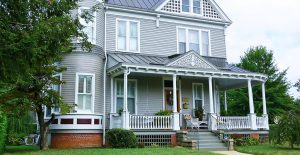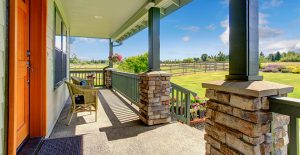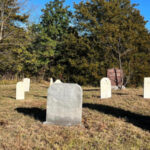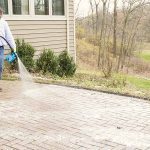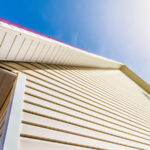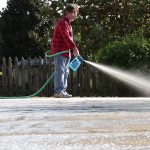Porch Predators: How to Clean Your Porch
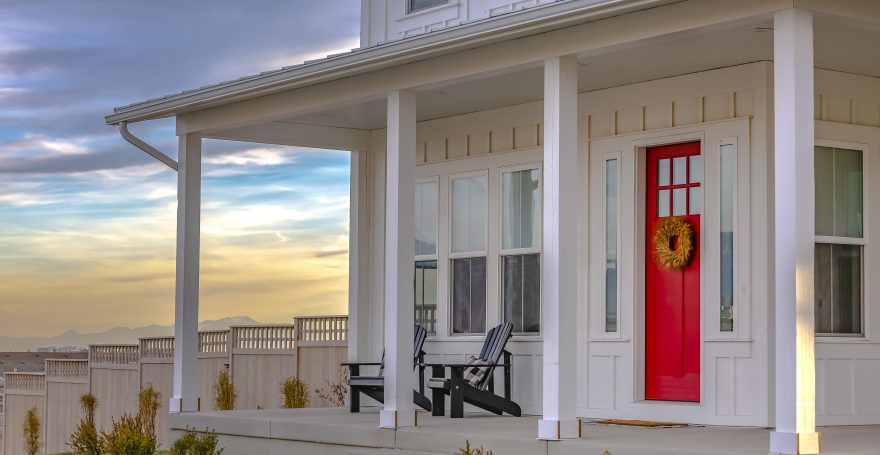
As the summer begins, make sure your porch is ready for mornings to yourself or for greeting your guests to your summer party. Keep uninvited guests like moss, mold, mildew, and algae off your porch.
Keep reading to learn how to clean your porch with Wet & Forget products.
Is my porch at risk?
Front porches are more vulnerable to mold and mildew because of the building materials used to construct them. However, other types of organic growth can also call your front porch home if you do not care for your porch properly.
For a more in-depth description on popular residential property building materials, check out our article on deck cleaning. With this in mind, your front porch may be at risk of hosting some of these uninvited guests.
What front porch style do I have?
Learn which type of porch styles are prone to moss, mold, mildew, and algae growth.
The Farmhouse Porch Style
This country style porch has an elevated, one-step up area that opens up to the rest of the yard in front of your house. The only difference is that some may have a rail or a screen for safety or aesthetic purposes.
The most commonly used materials used for this type of porch are wood and iron. Farmhouse porches are more prone to mold and algae due to the flooring being lower towards the ground and the porous characteristic of wood.
To keep your porch looking new, do inspections frequently and take action if moss, mold, mildew, or algae are found lingering.
The Colonial Porch Style
This popular porch style includes two-story pillars that add a classic touch. The South is well-known for houses with this porch style to beat the summer heat.
It includes large classical, symmetrical pillars to support the large covering. With the large covering comes lots of shade to help keep the porch nice and cool in the summertime.
In fact, people will often install a ceiling fan as well to bring in a nice breeze.
The most common materials used for this type of porch is brick or wood. With the large covert, it makes it the perfect place for mold and mildew to grow.
To help keep your classic porch in tact, do inspections every couple of months to ensure its stays looking nice.
The Queen Anne Porch Style
This Victorian-era styled porch emphasizes on the detailing of the home’s architecture. With intricate railings and flat-sawn balusters, this type of porch really shows off the personality of the home.
With technology advancements in the late 1800s, this porch style began to rise in popularity. As production became more affordable, the demand for this style increased.
The most common material used is wood. Highly absorbent materials, like wood, makes for a great hiding spot for organic growth.
With Queen Anne porches, mildew can also be an issue due to the porous characteristic of wood providing the perfect breeding ground. Therefore, taking action to remove moss, mold, mildew, and algae at first sight can help prevent it from growing further.
The Bungalow Porch Style
This porch style is popular among one-story houses. Adopted from India, the bungalow concept became very popular in the post-war era.
Its smaller, yet highly functional layout caught the attention of many home buyers in suburban areas in the United States. The most common building materials used include wood, stone, or brick.
These materials can help enhance the porch’s appearance by adding a little flair to the front of the house. For Bungalow porches, moss and mildew can be commonly found due to the shade that the covering provides.
Be sure to check the areas with stone or brick more often as they are areas that are harder to spot organic growth.
What if my porch uses a combination of building materials?
Having a combination of building materials makes your porch look nice and inviting- it looks especially inviting for moss, mold, mildew, and algae. It is important to check the nooks and crannies because that is where organic growth like to call home.
As a result of its porous composition, woods, stones, and bricks make for a great host. While metalwork is less porous, organic growth can still occur and spread to more porous areas.
With the mixture of summer weather and porous materials, it makes it a safe haven for these porch predators. Rather than treating wood, stone, brickwork, and iron all differently, simply apply Wet & Forget Outdoor Concentrate solution to all of the affected surfaces.
How do I use the Wet & Forget Outdoor Concentrate product on my porch?
Tackle moss, mold, mildew, and algae on your porch with the Wet & Forget Outdoor Concentrate. With the use of our product, it can keep these organic growth away for up to a year or longer.
To apply Wet & Forget Outdoor Concentrate:
- Ensure the surface you will be applying to is dry to the touch.
- Sweep any debris or loose growth away.
- Saturate the affected surface thoroughly.
- Allow 4 to 5 hours of drying time.
- Wait for the results! Wet & Forget works with the help of Mother Nature over time.
- Re-apply annually or at the first sign of new growth.
How can I clean my porch ceiling or screened-in porch of organic growth?
The prime location for moss, mold, mildew, and algae are the connecting points of the support posts to the covering. However, they can easily grow and spread onto the porch ceiling or onto a screened-in porch.
Corners and connecting points make for the perfect hiding spot, so make sure you are able to get product into those little areas as well. To clean porch ceilings or porch screens, check out these steps to beat moss, mold, mildew, and algae growth.
If your porch recieves direct sunlight, we recommend using Wet & Forget on an overcast or cloudy day to prevent rapid evaporation of the product.
To clean porch ceilings:
- Remove all furniture and plants and store them at another location.
- Spray product onto the ceiling in a diagonal angle to minimize any overspray landing on the person applying.
- Allow the product to dry for 4 to 5 hours and then rinse your porch ceiling a week later. Continue to rinse your porch ceiling weekly. This step is key since it is a tougher spot for rain to reach. Then, let the wind come through and results will follow.
To clean porch screening:
- Move furniture or plants away from the screening.
- Spray product onto the screen from the outside to minimize product from entering your into your home.
- Allow the product to dry for 4 to 5 hours then let the rain and wind do the rest!
What if there is lichen?
The Wet & Forget Outdoor Concentrate product instructions differs for removing lichen.
- Verify that the surface is dry before spraying the product.
- Use a garden sprayer and mix 1 part Wet & Forget Outdoor Concentrate with 5 parts water and thoroughly saturate the lichen-infested surface.
- Finally, wait 15 minutes before reapplying Wet & Forget Outdoor Concentrate – ensure the area is completely saturated once again. By applying the product twice, it allows the product to thoroughly penetrate lichen and eliminate it from your porch. For continued results, re-apply product annually or at the first sign of re-growth.
For more tips on removing lichen, click here.
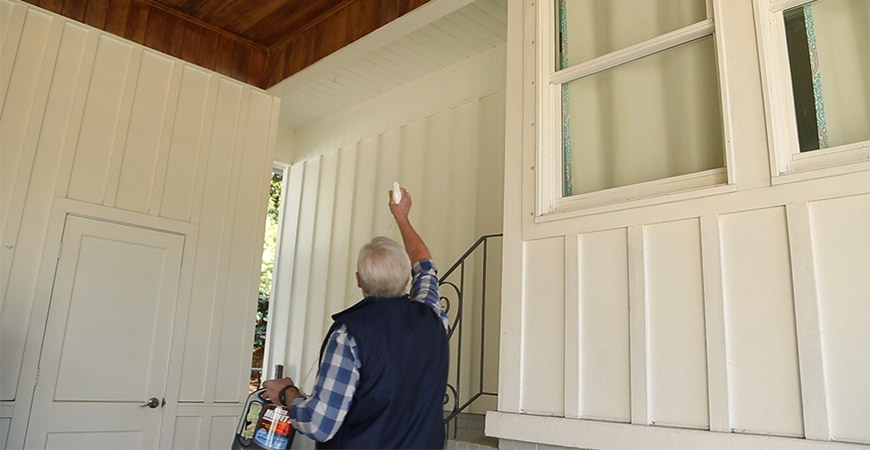
Any extra tips to ensure my porch stays free of porch predators?
Keep spiders away from your porch with Miss Muffet’s Revenge and get the crawlers to crawl away for good.
Apply a 12” band of product along the exterior perimeter of your porch or in any areas that you notice spiders. Spray until slightly wet without soaking.
For best results, apply Miss Muffet’s Revenge on a clear, dry day when wind and rain are not forecasted. Leave the application for one week, then come back and clean up any remaining cobwebs.
For more outdoor spaces cleaning tips, click here to ensure your front porch stays healthy.



